
A new exhibition from Cambridge University Library (UL) is set to bring to life the hidden words buried in some of our oldest manuscripts - known as palimpsests.
#ULghostwords
Ghost Words examines the quest to retrieve the hidden world of words, as well as the cutting-edge technology now used to recover lost works from four standout palimpsests as well as other notable examples. There will be more than two dozen other manuscripts - ranging in age from the 5th century CE to as recent as the 18th century - for visitors to explore and discover.
So, what are palimpsests?
Palimpsests are manuscripts from which the text has been scraped or washed off so they can be reused. They are the literary equivalent of buried treasure, and scholars over the last two centuries have patiently sought to decipher the lost or forgotten words hidden under layers of newer ink.
The need for and shortage of new writing material led societies to erase existing texts and write over them. Monastic libraries in Byzantium and the Holy Land, and the Jewish communities of Egypt and Palestine cleaned old parchment manuscripts to produce new books.
But whereas Christians used items from their own shelves, Jewish scribes, conscious of the sanctity of the written Hebrew word, found it safer to reuse parchment obtained from outside their community.
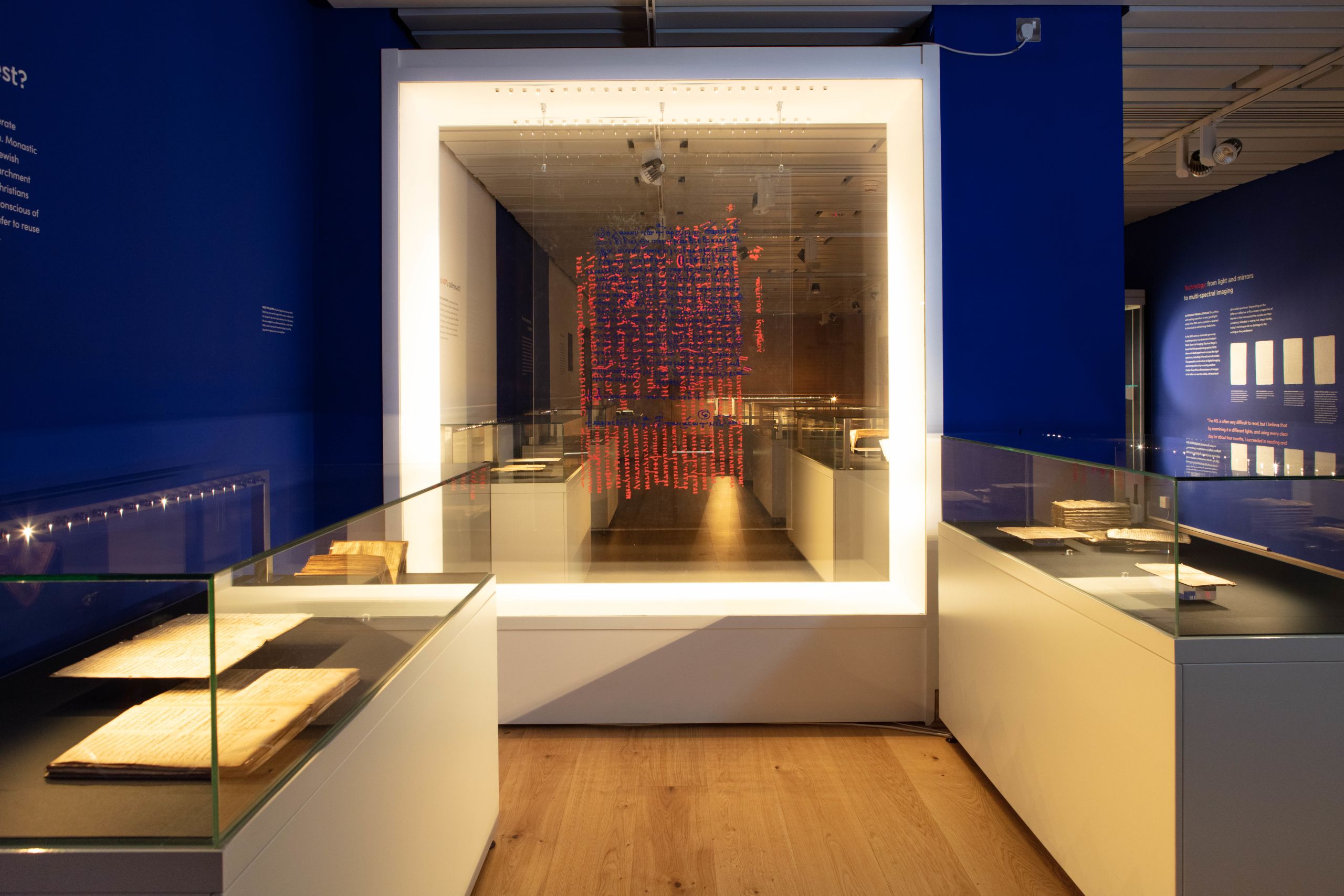
The exhibition in the Milstein Exhibition Centre. Credit: Cambridge University Library
The exhibition in the Milstein Exhibition Centre. Credit: Cambridge University Library

“Cambridge holds one of the most varied ranges of palimpsests held by any institution in the world, with a range of different types, showing the extent of the practice of recycling manuscripts within the Jewish, Christian and Muslim scribal traditions.”
“There are Christian manuscripts in Greek, Latin and Georgian, overwritten by Jewish scribes in Hebrew, or manuscripts of the Qur’an overwritten by Christian scribes in Arabic, or Christian manuscripts in old-fashioned Greek scripts being overwritten by Christian scribes in newer Greek scripts.”
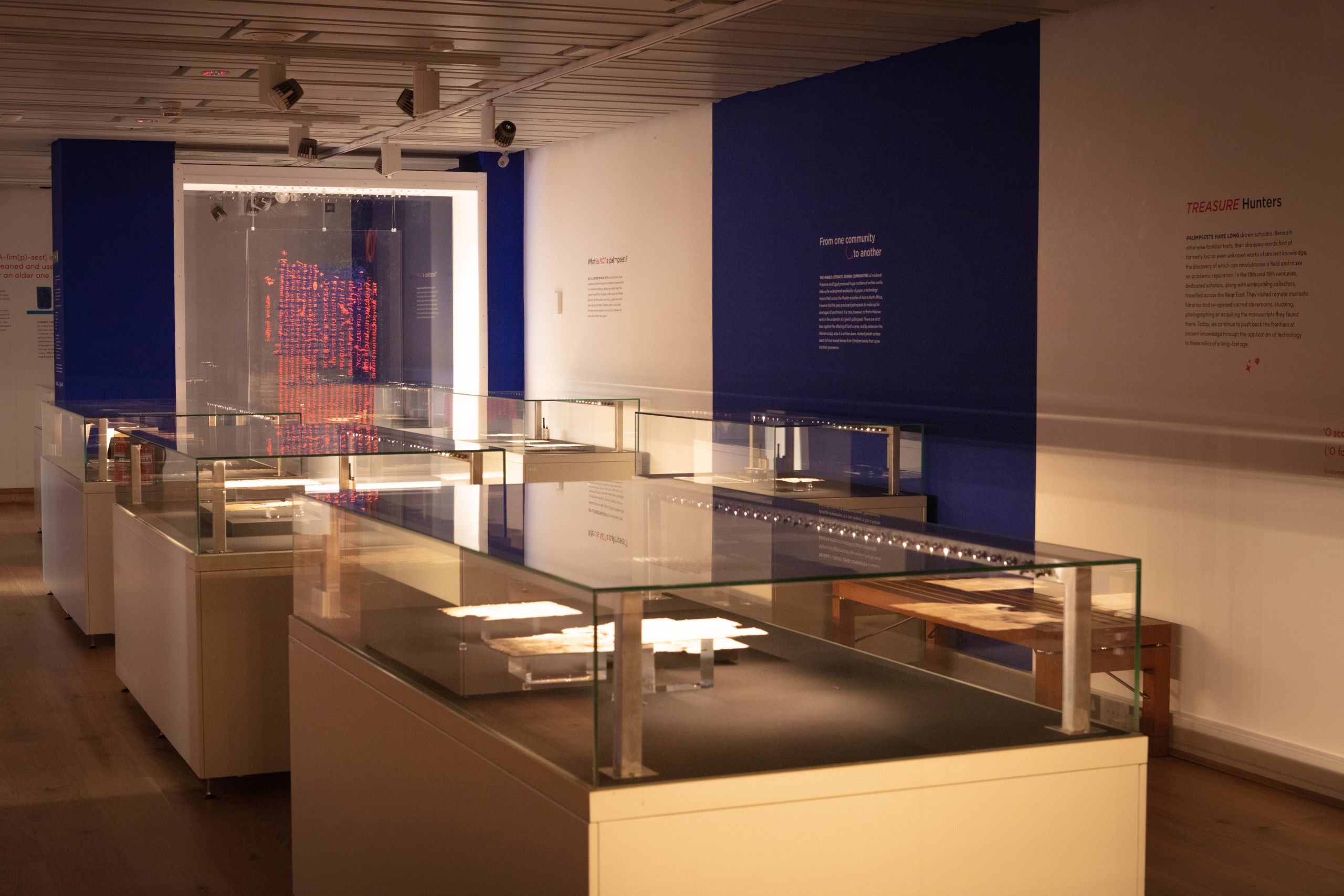
The exhibition in the Milstein Exhibition Centre. Credit: Cambridge University Library
The exhibition in the Milstein Exhibition Centre. Credit: Cambridge University Library
"Every manuscript in this exhibition, down to the tiniest fragment, has a fascinating story to tell about how books and documents were used and reused and how scholars have employed a variety of methods to decipher them from sunlight and magnifying glasses to cutting edge imaging techniques."
Dr Chris Burgess, Head of Exhibitions and Public Programmes at Cambridge University Library, said: “When putting the exhibition together I have been drawn increasingly to palimpsests as objects.
“Why? I read not one word of Greek, or Arabic, or Latin, or any of the other myriad languages contained within their layers. But as objects they are mesmerising, the pale writing of the undertext a ghostly presence under the newer writing above. The layers of text almost, but not quite, lost from history.”
Codex Zacynthius
The centrepiece of the exhibition is the University Library's famous Codex Zacynthius. This manuscript was originally made in the 8th century CE, and contains a copy of the Gospel of Luke, surrounded by an early commentary made up of extracts from writings of the early church, including many now otherwise lost.
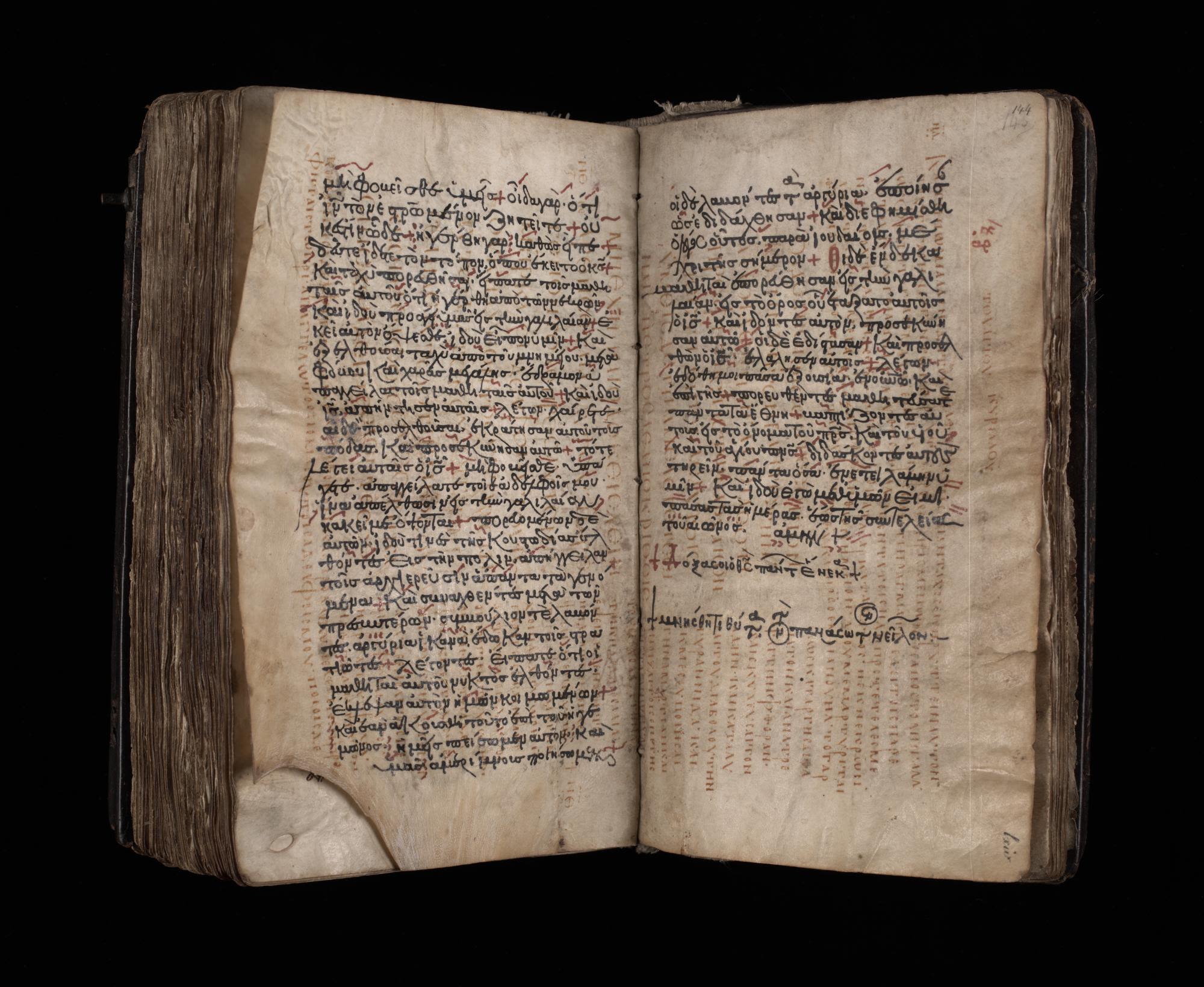
Codex Zacynthius. Credit: Cambridge University Library
Codex Zacynthius. Credit: Cambridge University Library
Its leaves were erased, cut and rearranged into a new book in the 1170s or 1180s on the island of Rhodes. A monk named Neilos reused them to copy a Greek Gospel lectionary, containing passages to be read during Christian worship on each day of the year according to the Byzantine rite.
The original manuscript is the only commentary where both the Gospel text and its commentary, called a ‘catena’, are in the older uncial Greek letters. Indeed, it is thought to be the oldest manuscript with this type of marginal commentary. It provides important evidence about the development of Greek scripts, since it dates to a period from which few manuscripts survive.
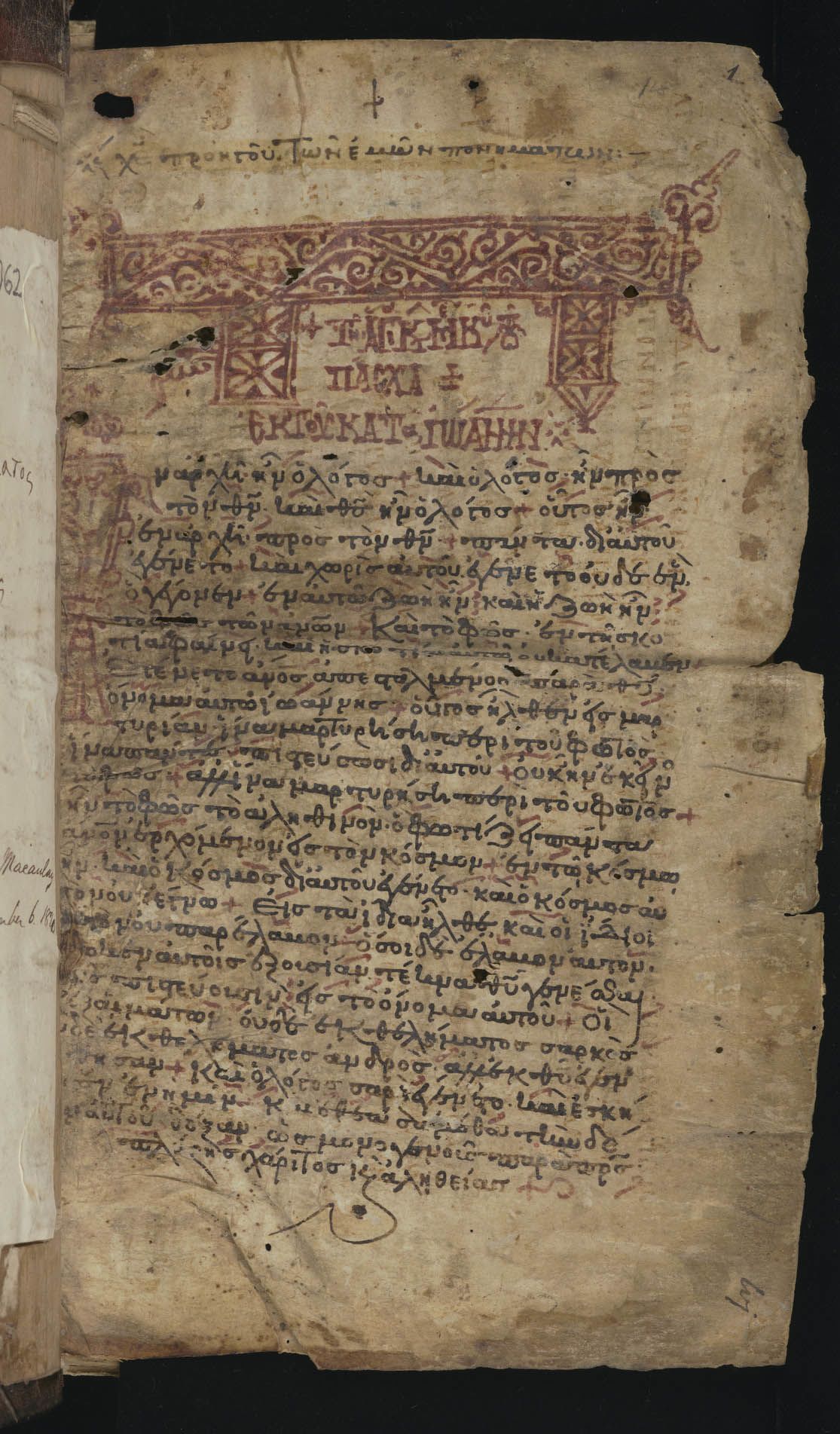
Lections for the weeks of John for Codex Zacynthius. Credit: Cambridge University Library
Lections for the weeks of John for Codex Zacynthius. Credit: Cambridge University Library
The original manuscript is incomplete: eighty-six full pages and three half-pages were reused in the palimpsest, which preserves an opening preface, a table of chapters and around 340 extracts commenting on passages from the first eleven chapters of Luke. The whole Gospel would have covered around 240 pages, although no other portions of this document are known to survive.
Presented to a British dignitary on the island of Zakynthos (now a popular tourist destination), it was for two hundred years in the collection of the British and Foreign Bible Society. In 2014 it was put up for sale and purchased by the library for £1.1million, following a successful public appeal.
"Putting Codex Zacynthius on display at the end of the first major project on the manuscript using technology to finally read every word of its important and unique undertext is the culmination of many years of work. When the UL was given the opportunity to purchase the manuscript, it was a stretch to raise the money, and it could easily have been sold to a private collector elsewhere. Instead, thanks to the generous support of donors including the National Heritage Memorial Fund and the Friends of the National Libraries, we were able to purchase it and keep it accessible in Cambridge where it had been for decades”.
In partnership with the University of Birmingham, a project funded by the Arts and Humanities Research Council has helped to uncover the lost words of the Codex Zacynthius by using a technique known as multispectral imaging, using dozens of different wavelengths of light to reveal the original text and make it readable.
Recovering the text of the Oldest New Testament Catena manuscript
The application of multispectral imaging to the manuscript has allowed researchers to make the first complete transcription and translation of the catena commentary - literally a 'chain' of connected extracts of writings from the early Christian Church - freely available online alongside these state-of-the-art images on the Cambridge Digital Library.
Hexapla
Alongside the Codex Zacynthius is the Hexapla - Greek for ‘Sixfold’ - named for its format of six parallel columns. It is a fabled edition of the Bible which brings together six different versions in Hebrew and Greek, in parallel columns.
Produced by the 3rd-century Christian scholar Origen, this vast work of more than 6,000 pages was once the pride of the library of Caesarea in Byzantine Palestine. Until the 19th century, all copies were thought lost.
Very few copies of such an enormous and difficult work seem to have been produced, and Origen’s original manuscript of the Hexapla was probably destroyed along with the rest of Caesarea’s library sometime before the 7th century CE. This particular manuscript (T-S 12.182) is one of only two known copies of the Hexapla, and – from around the 7th century – it is the oldest.
It was identified in Cambridge at the end of the 19th century in the undertext of a Jewish poetry manuscript from the Cairo Genizah.
It is the most important witness we have to Origen’s lost masterwork and as close as we are ever likely to get to the original. Although descriptions of Origen’s Hexapla vary, most agree that the ‘Sixfold’ was made up of six columns, placed side by side, with the first column in Hebrew script, the second a transliteration of the Hebrew into Greek script, and the remaining four with different translations of the Bible into Greek.
The single leaf of the Hexapla held at the library lacks a Hebrew column. The Jewish scribe who created this palimpsest, sometime in the 9th or 10th century, cut down the much larger parchment leaf, and did so irregularly — perhaps deliberately removing the sacred Hebrew characters that he would not have wanted to overwrite.
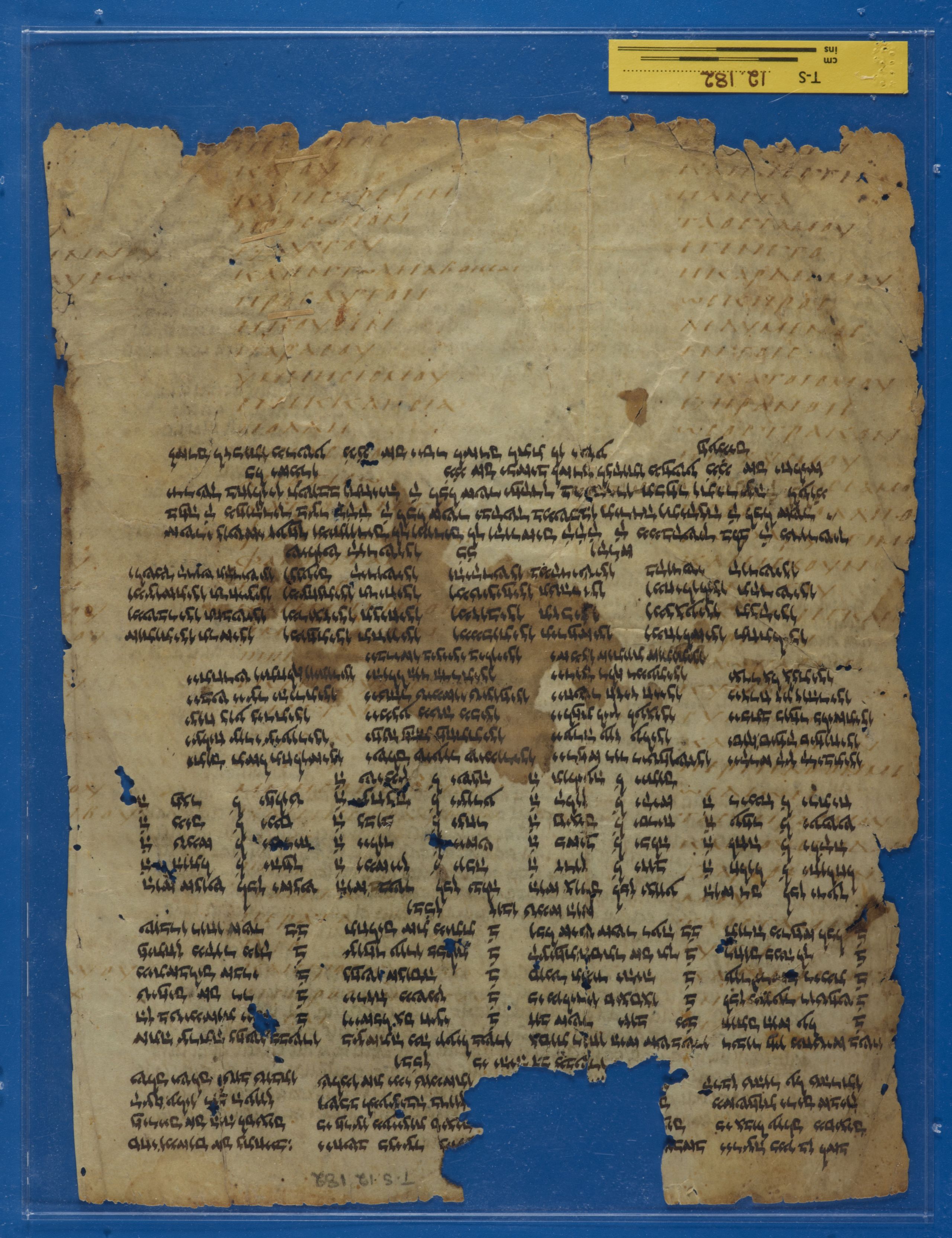
Visible light image of the Hexapla (oriented to show Greek under-text the right way up). Credit: Cambridge University Library
Visible light image of the Hexapla (oriented to show Greek under-text the right way up). Credit: Cambridge University Library
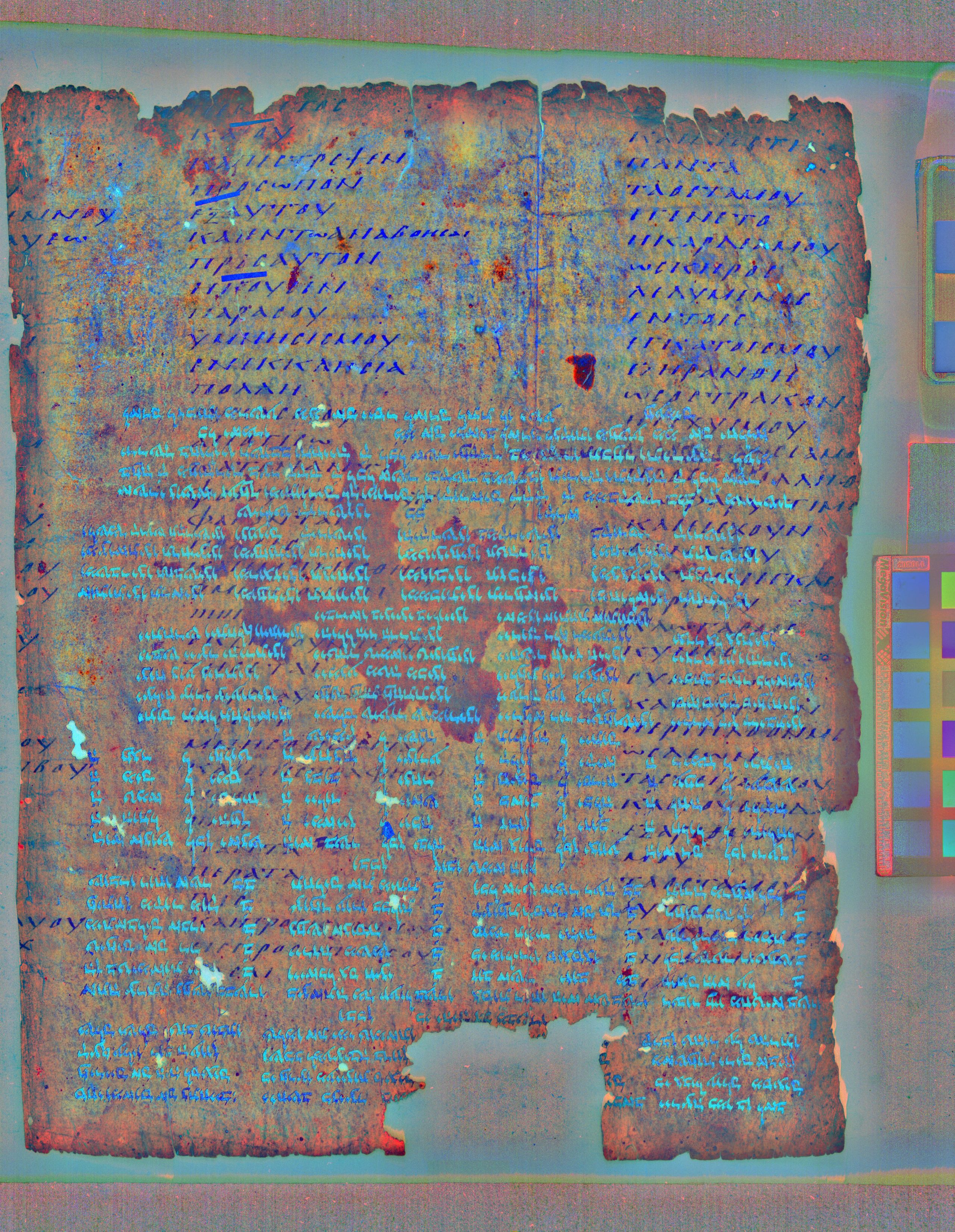
Hexapla under multispectral imaging. Credit: Cambridge University Library
Hexapla under multispectral imaging. Credit: Cambridge University Library
“The manuscript of Origen’s Hexapla is one of only two fragmentary copies of this work in existence," said Outhwaite. “The Library's copy, as well as being much older than the other one, was possibly produced from Origen’s own copy held in the great library at Caesarea.”
Ironically, in focusing on the undertext, it took scholars another decade to realise that the Hebrew overwriting of the manuscript contained the lost poems of Yannai, the greatest poet of the early synagogue.
“This leaf is therefore remarkable for the rarity of the texts it preserves in its under- and overwriting. It is also extraordinary that the scribe who produced the palimpsest used several other leaves from another lost work of late antiquity, when putting his book of liturgical poetry together – the Greek Bible translation by Aquila of Sinope (2nd century CE). All these leaves are being publicly exhibited together for the first time.” Added Outhwaite.
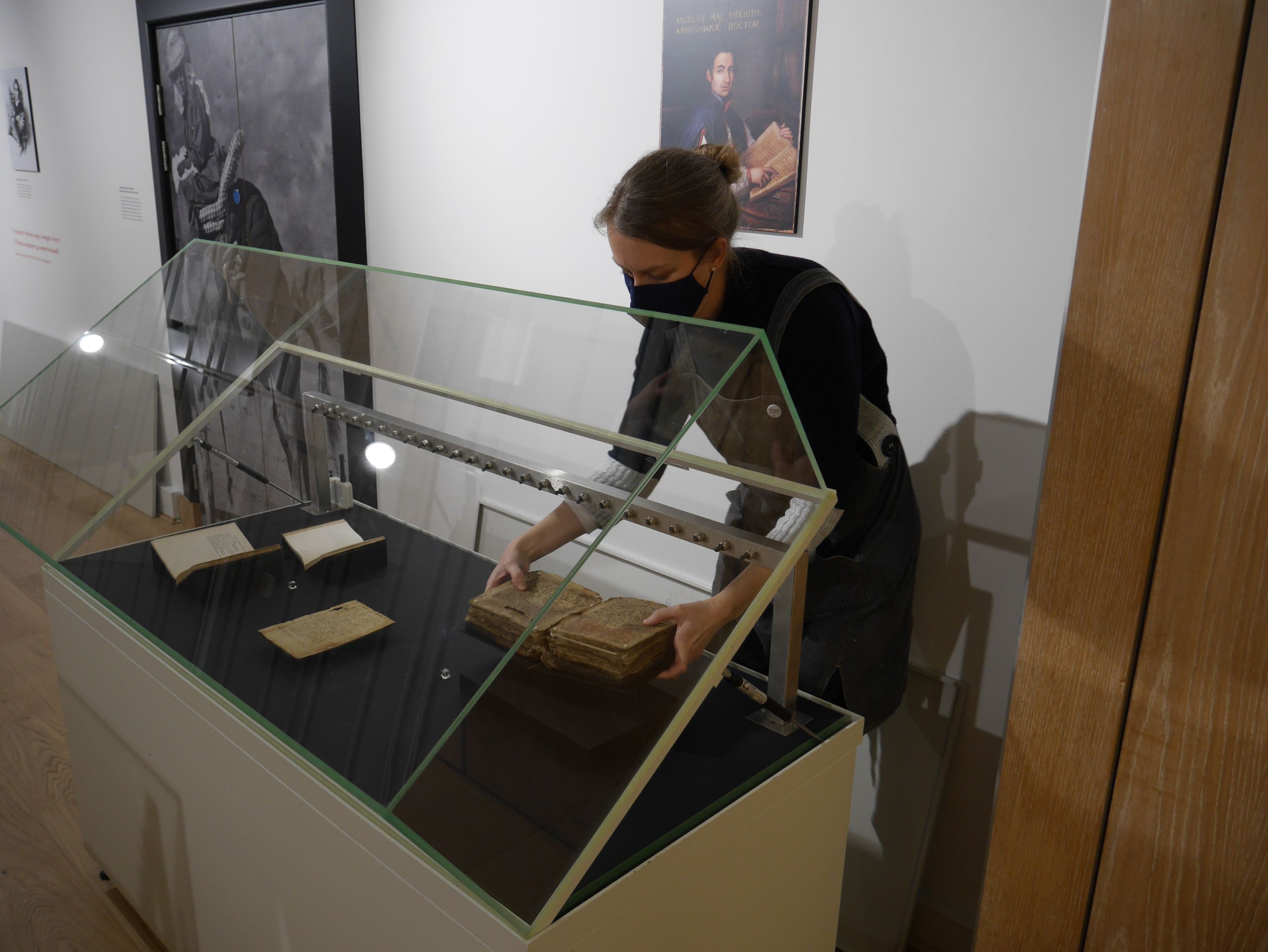
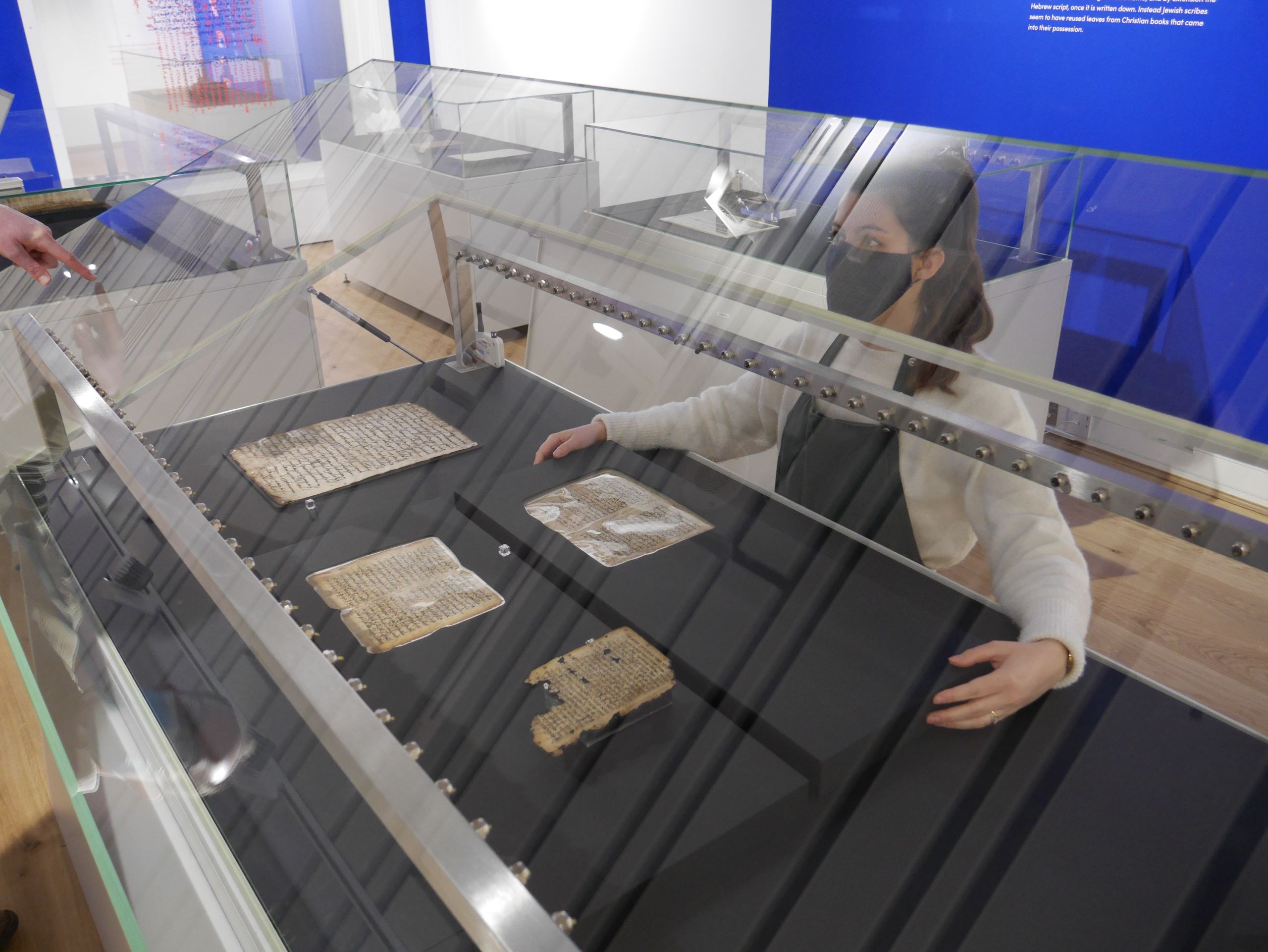
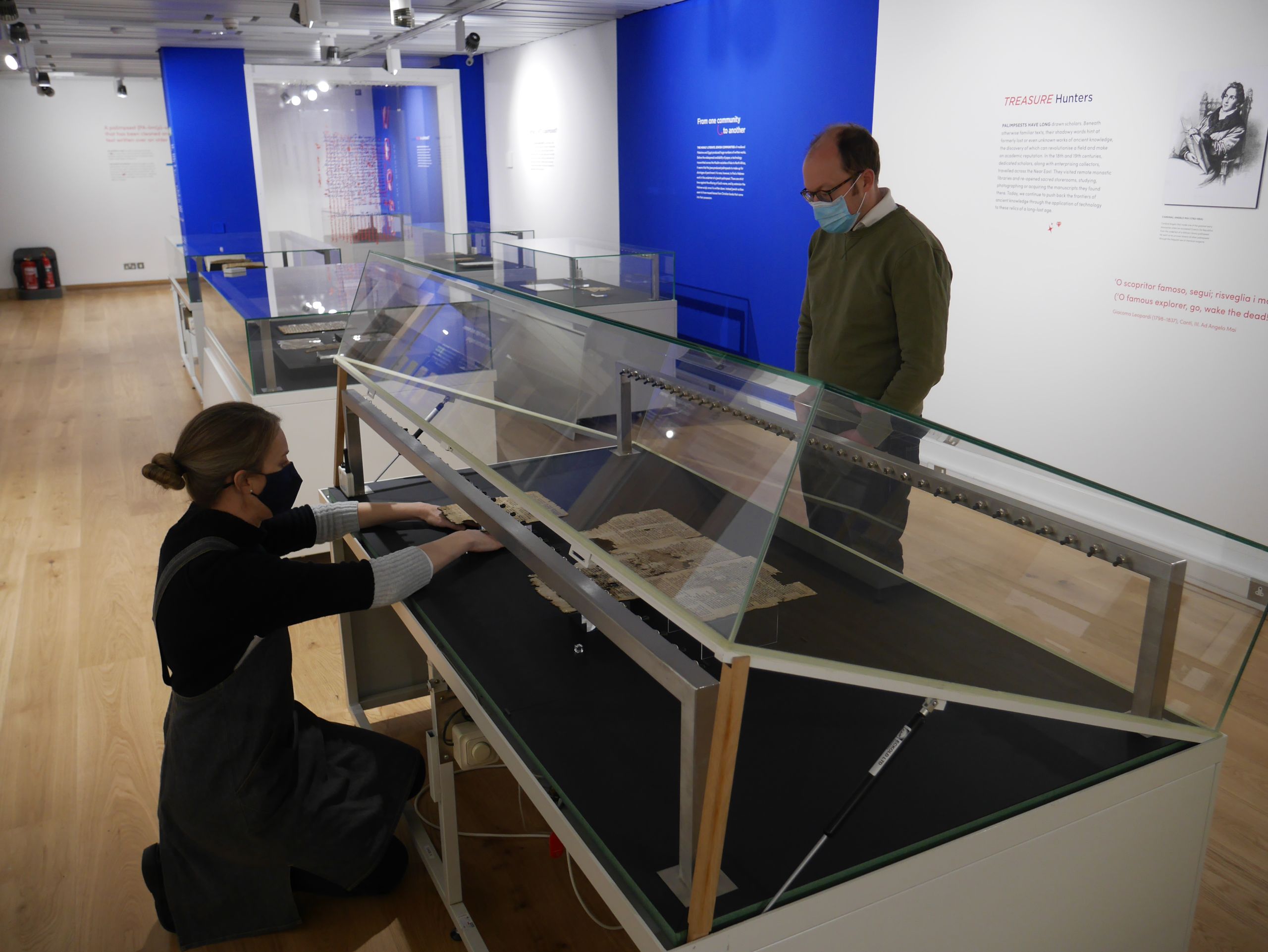
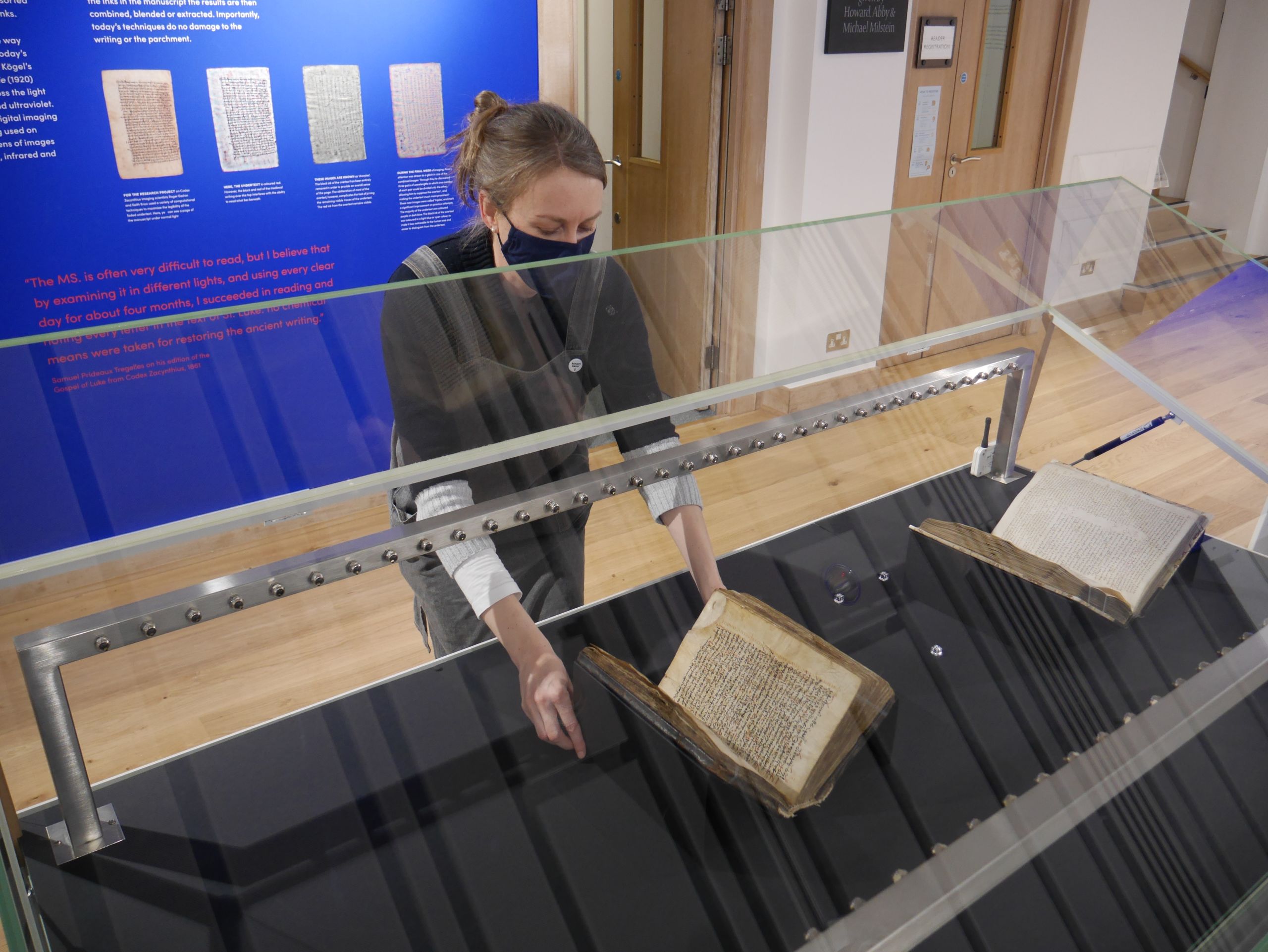




Archimedes Palimpsest
Cambridge University Library is home to a single leaf from the Archimedes Palimpsest, a now world-famous medieval copy of previously lost works by the great Greek mathematician. The palimpsest was put into the spotlight in 1998 when it was sold to an anonymous buyer at Christie’s, New York for $2,000,000.
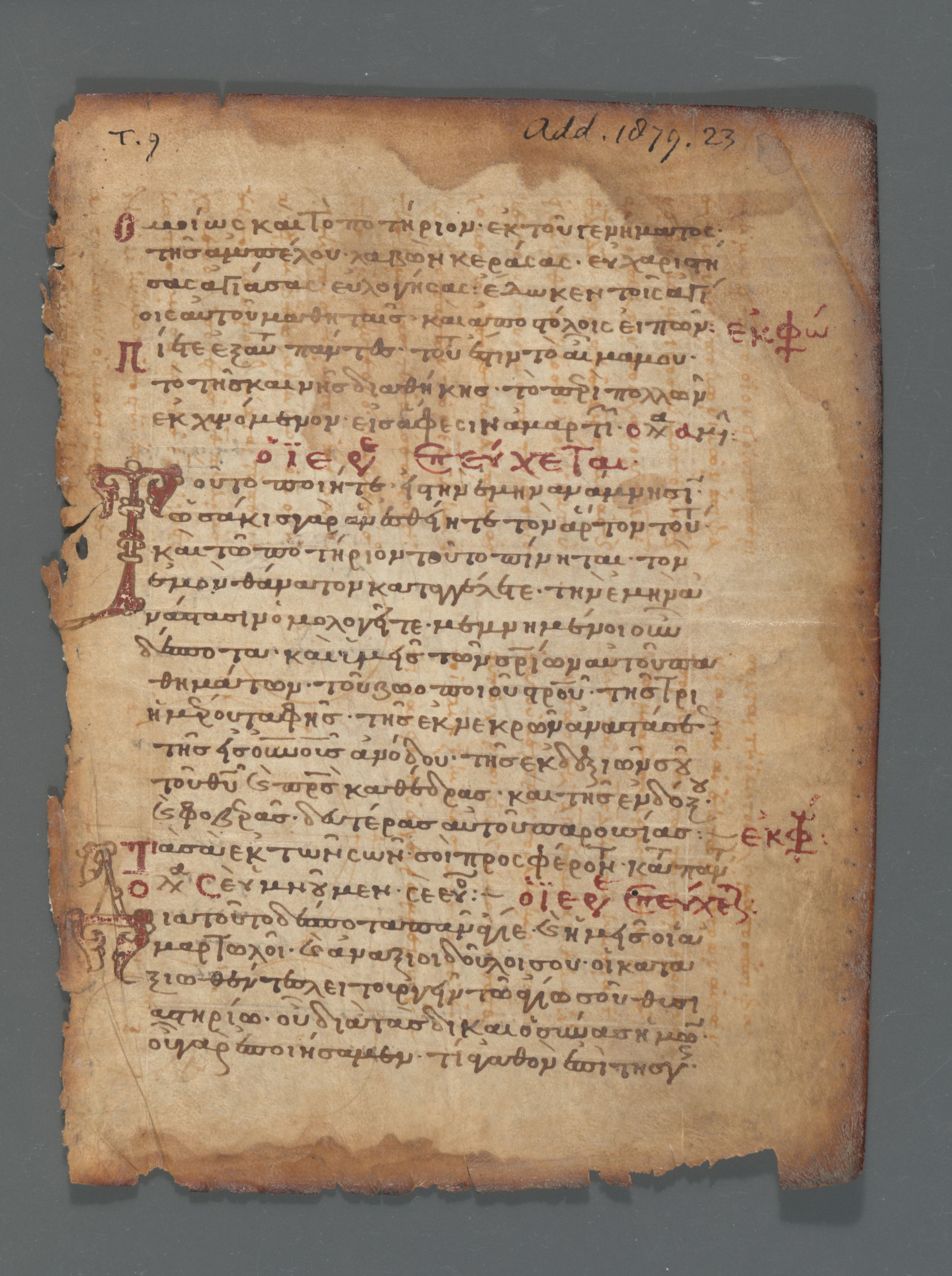
Archimedes Palimpsest. Credit: Cambridge University Library
Archimedes Palimpsest. Credit: Cambridge University Library
The overtext of the palimpsest is a Byzantine prayerbook, written in Greek around 1229, probably in Jerusalem. Although the manuscript was known to preserve Archimedes’ works, and had been read by various scholars using nothing more than a magnifying glass, it is only through the advances of imaging technology today that the text could be recovered in full.
Subsequent multispectral imaging revealed seven treatises from the Ancient Greek mathematician Archimedes in the undertext. Two of these had not survived anywhere else in the world.
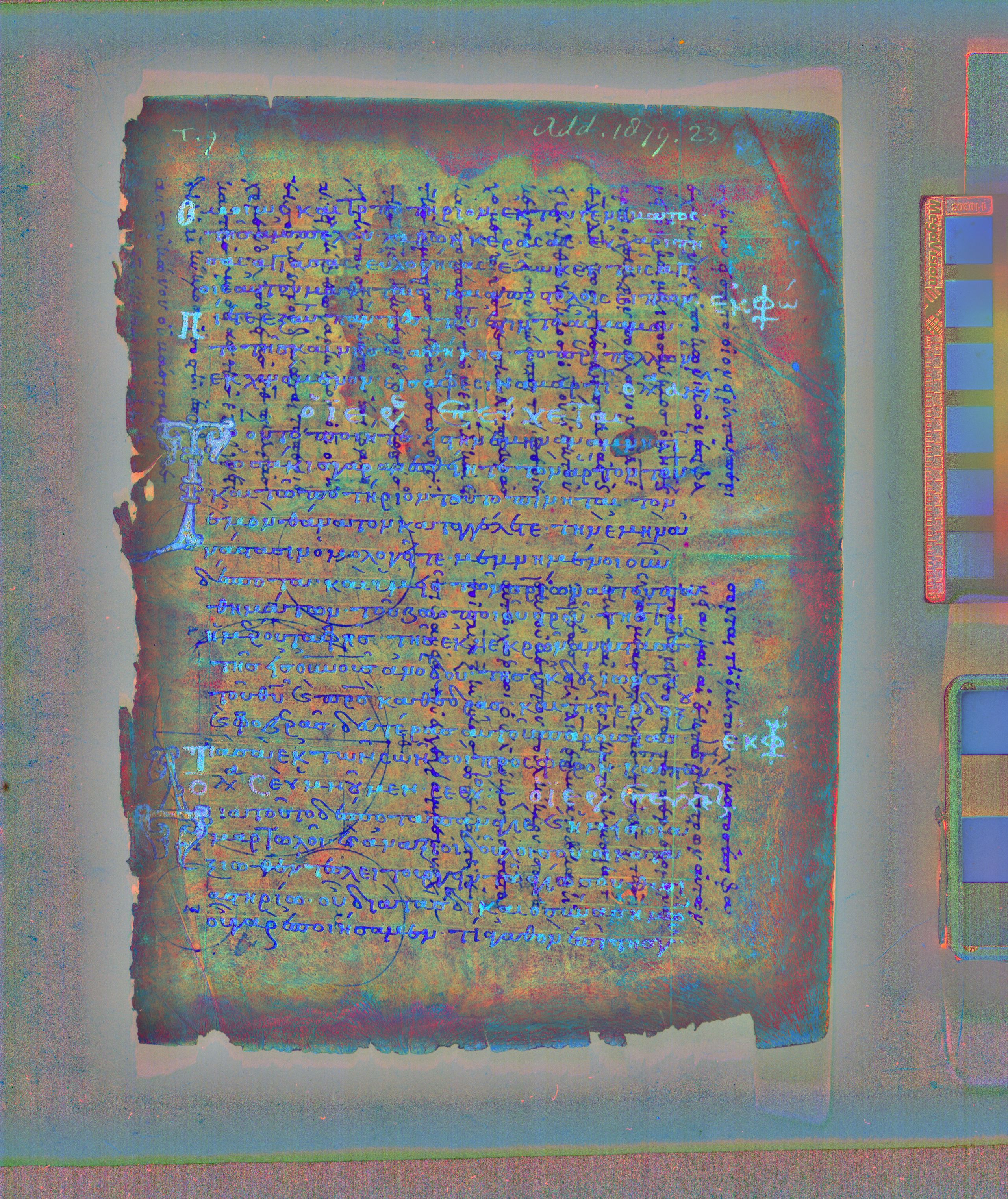
Archimedes Palimpsest under multispectral imaging. Credit: Cambridge University Library.
Archimedes Palimpsest under multispectral imaging. Credit: Cambridge University Library.
The Archimedes palimpsest leaf at the UL is part of the Polonsky Foundation Greek manuscripts project, an ongoing project (2019–2021) based in the library to catalogue, conserve and digitise all the medieval and early modern Greek manuscripts in Cambridge including the UL, the Fitzwilliam Museum, and 12 Cambridge colleges, totalling over 400 manuscripts.
“All the Greek manuscripts in the exhibition are part of this project and have been digitised, conserved and catalogued,” says Suzanne Paul. “There is a huge range of texts from scientific (like the Archimedes palimpsest) to religious (like Zacynthius)."
Mingana-Lewis Palimpsest
The fourth standout palimpsest featured in Ghost Words is the Mingana-Lewis Palimpsest, purchased by the legendary twin sisters Agnes Lewis Smith and Margaret Dunlop Gibson, on their travels in Egypt in the late 19th century, and generously donated to Cambridge University Library in 1936.
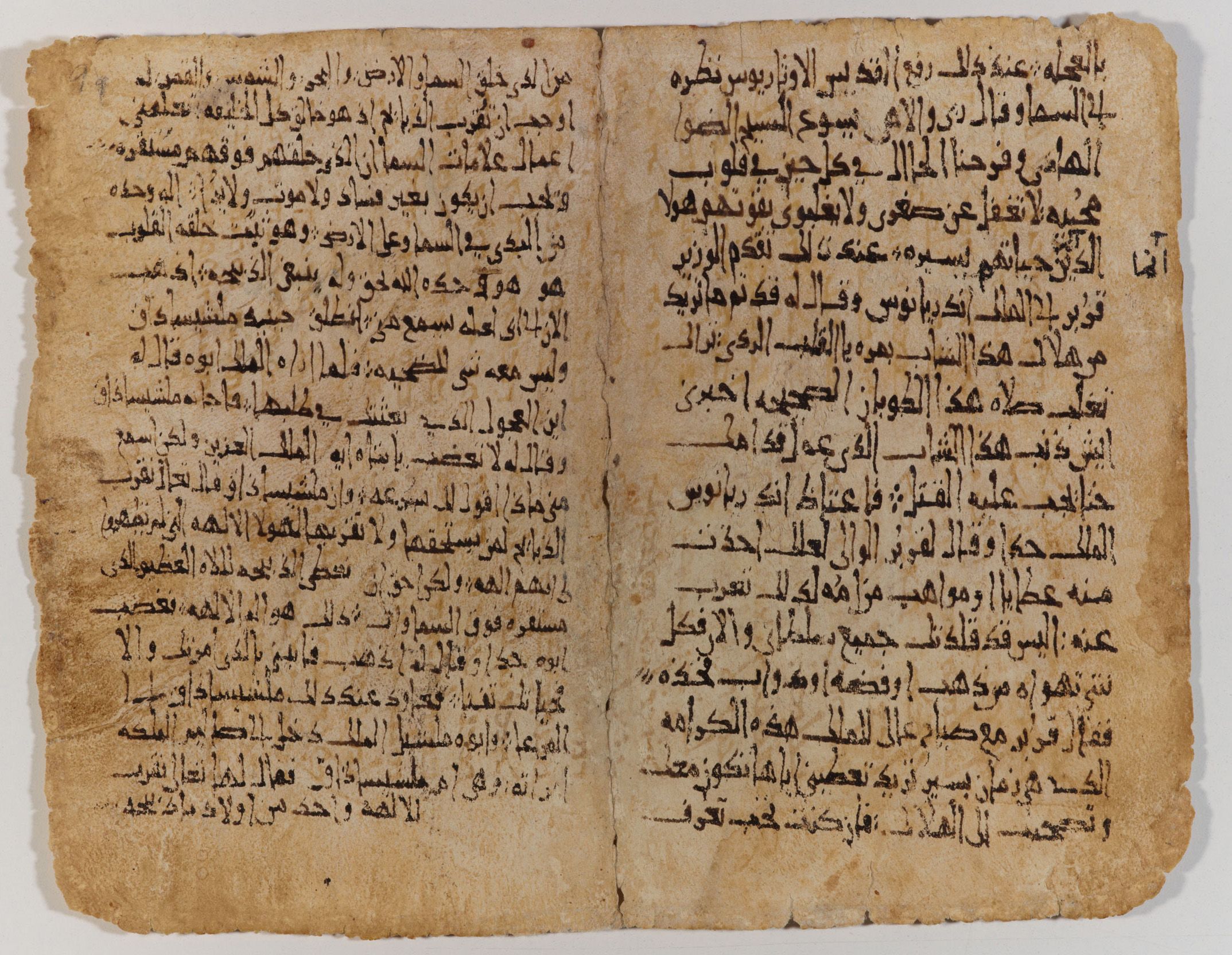
Mingana-Lewis Palimpsest. Credit: Cambridge University Library.
Mingana-Lewis Palimpsest. Credit: Cambridge University Library.
This complex manuscript contains portions of two ancient Qurʼāns, probably written in the 7th or 8th century CE. A scribe of Saint Catherine’s monastery in Sinai, in the 9th or 10th century CE, wrote over these Christian homilies in Arabic that included texts from John Chrysostom and Saint Ephrem.
The codex remained at Saint Catherine’s until the 19th century, after which single leaves were torn from the codex, with the larger part, containing 162 leaves, ending up on the antiquarian market in Egypt where it was subsequently purchased by Lewis Smith. It was only on closer examination after purchase that Agnes discovered the numerous texts hidden beneath the homilies.
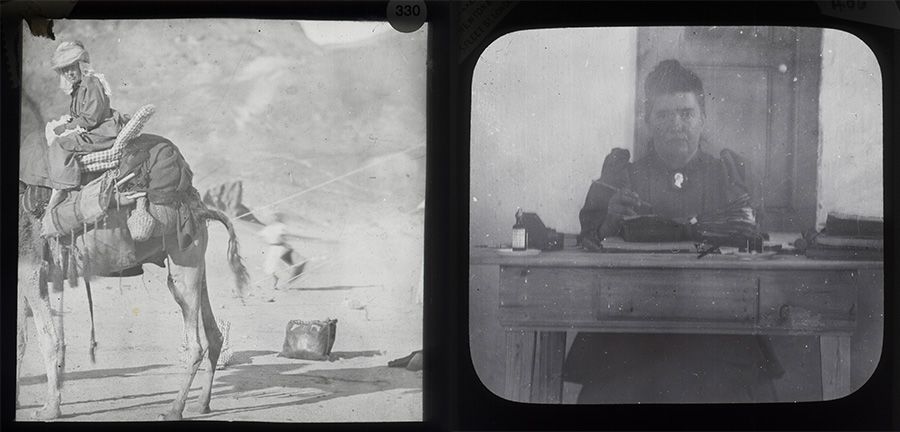
The Lewis-Gibson sisters. Left: Margaret Gibson, right: Agnes Lewis. Credit: Westminster College, Cambridge
The Lewis-Gibson sisters. Left: Margaret Gibson, right: Agnes Lewis. Credit: Westminster College, Cambridge
With the help of contemporary scholars, she successfully identified portions of several Greek, Syriac and Arabic texts, some of which she successfully transcribed and published in her Apocrypha Syriaca in 1902.
In the last third of the codex, Agnes Lewis made a ground-breaking discovery: leaves from two ancient Qurʼāns, close in date to the lifetime of the Prophet Muhammad and perhaps some of the oldest examples in existence.
The two copies of the Qur’ān are incomplete and out of order, but are precious survivals of Qur’ānic text from the first centuries of Islam. Lewis's edition, prepared with the Arabic and Syriac scholar Alphonse Mingana, caused a great stir among scholars, and even led to accusations that they were forged in Mingana’s adopted home of Birmingham.
The 162-leaf codex disappeared after Lewis Smith sent it to the international book fair in Leipzig just a few days before the outbreak of the First World War. It returned to Cambridge thanks to the efforts of John Oman (1860–1939), principal of Westminster College from 1922 to 1935 and executor of Agnes’s will, which left the manuscript to Cambridge University Library.
After investigative work lasting several years, the Lewis Codex entered the Library in 1936. Its presence was eventually recorded in a catalogue in 1952, although it remained almost unnoticed by scholars. It is only recently that it has become an object of further research because of the underlying texts that were erased and recycled in its production.
Thanks to the research of Alba Fedeli, a scholar of Qurʼānic manuscripts now at the University of Hamburg, the historic context of the Mingana-Lewis Palimpsest is still being uncovered, and new methods have helped to create a possible reconstruction of the Qurʼānic under-writing.
Lewis and Gibson are Cambridge treasures in their own right. Once ridiculed as eccentrics, they are now recognised for their remarkable achievements not only in collecting manuscripts – in an unusually ethical manner for their time – but also in the ground-breaking scholarly work they did with them.
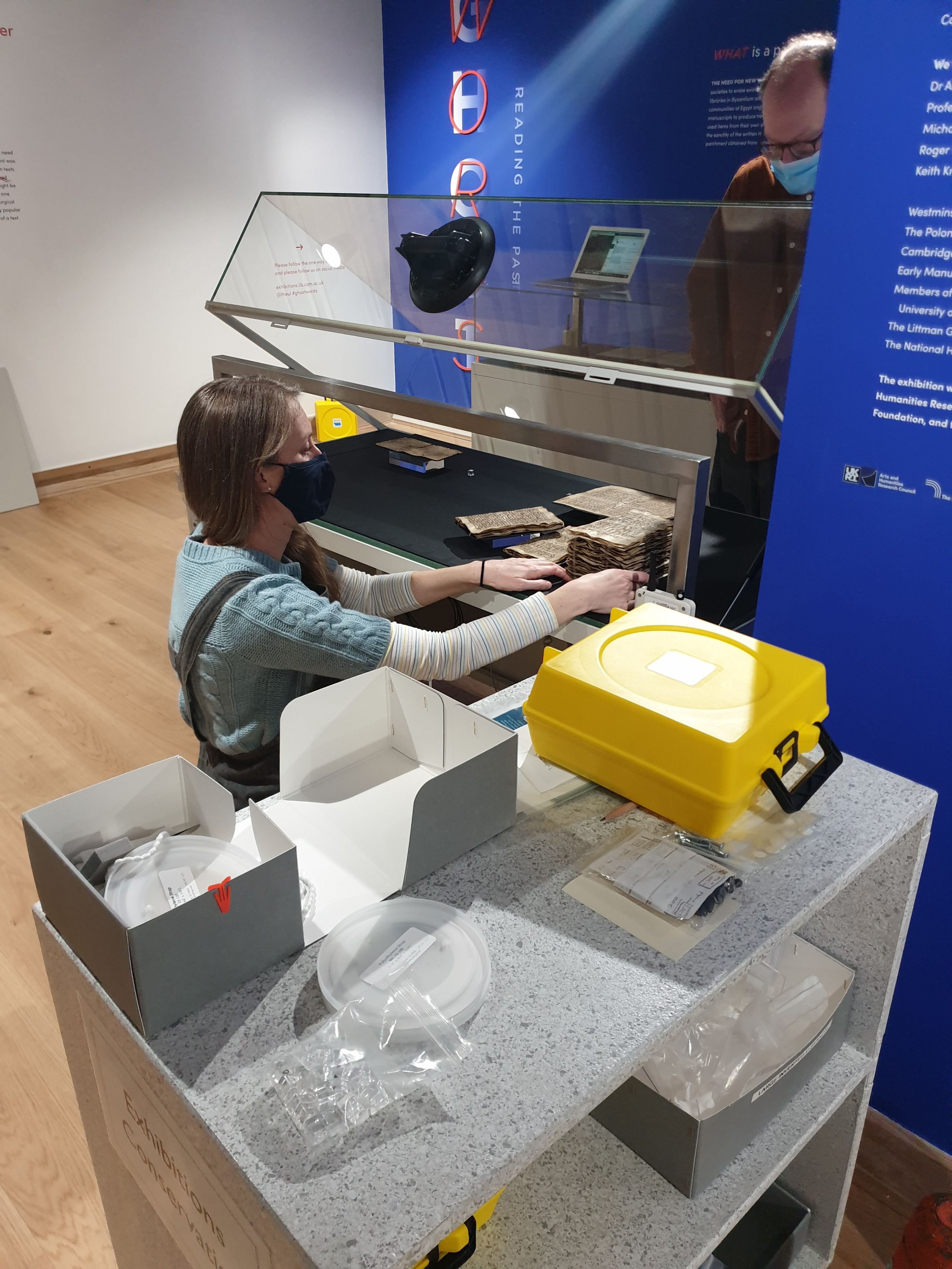
Objects in the exhibition being installed by conservators. Credit: Cambridge University Library
Objects in the exhibition being installed by conservators. Credit: Cambridge University Library
Other objects in the exhibition include:
- A recycled Ketubbah, a Jewish marriage deed, from the 10th century CE which was replaced by a copy of the popular Jewish magical work The Book of Secrets or Sefer ha-Razim. The original deed has been turned 90 degrees and cut down to size before being reused.
- A palimpsest of a Byzantine liturgical book with musical notation from the 13th or 14th century CE. The undertext contains hymns that were once common enough that their owners could happily erase and replace them with newer works, but which are now unknown.
- A medieval compilation of poetic works, including the ‘Cambridge Songs’, from the 11th century CE. The dark stain on the manuscript shows where scholars applied a chemical to bring the erased text back to life. Over the years, the chemical has darkened, leaving the ink even less legible than before. This particular Latin poem was deliberately erased by one of its owners, probably due to its erotic nature.
- A rare preserved fragment of St Augustine’s sermon for Easter Sunday from the 6th century CE that is 600 years older than any other copy. The vellum was reused by a Jewish scribe to write technical notes on the Hebrew Bible.
“It’s nice to put so many palimpsests on display from the Cairo Genizah, given that the collection is a treasure trove of texts with such a remarkable breadth and reach,” said Outhwaite.
“There is something to interest everyone: Christian and Jewish palimpsests in half-a-dozen different languages, on manuscripts dating back to Late Antiquity (the earliest is 5th c.), some of the rarest manuscripts of their type.”
Given the current restrictions that the coronavirus pandemic has enforced, the public will be able to enjoy the exhibition online through a special virtual tour where you will be able to walk through the exhibition space from your own home.
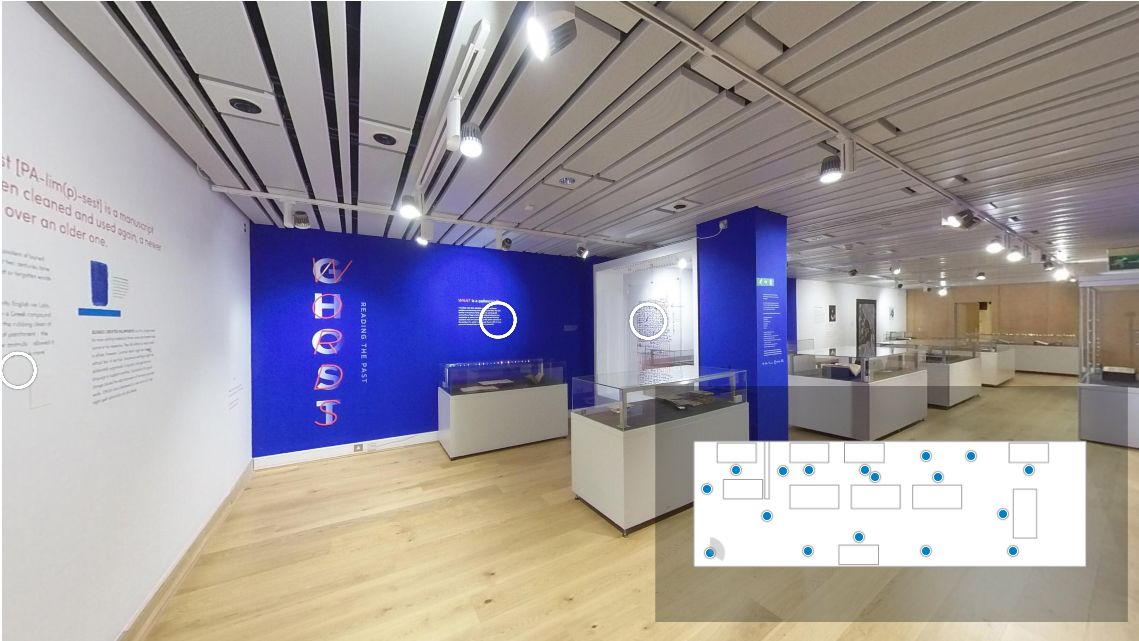
A screen shot of the virtual tour - follow the link above to explore.
A screen shot of the virtual tour - follow the link above to explore.
We will also be hosting a number of special online events over the coming weeks which will be open to all where the public will be able to learn about the themes and objects in the exhibition. Keep an eye on our social media feeds as well as our What’s On pages to find out what’s happening.
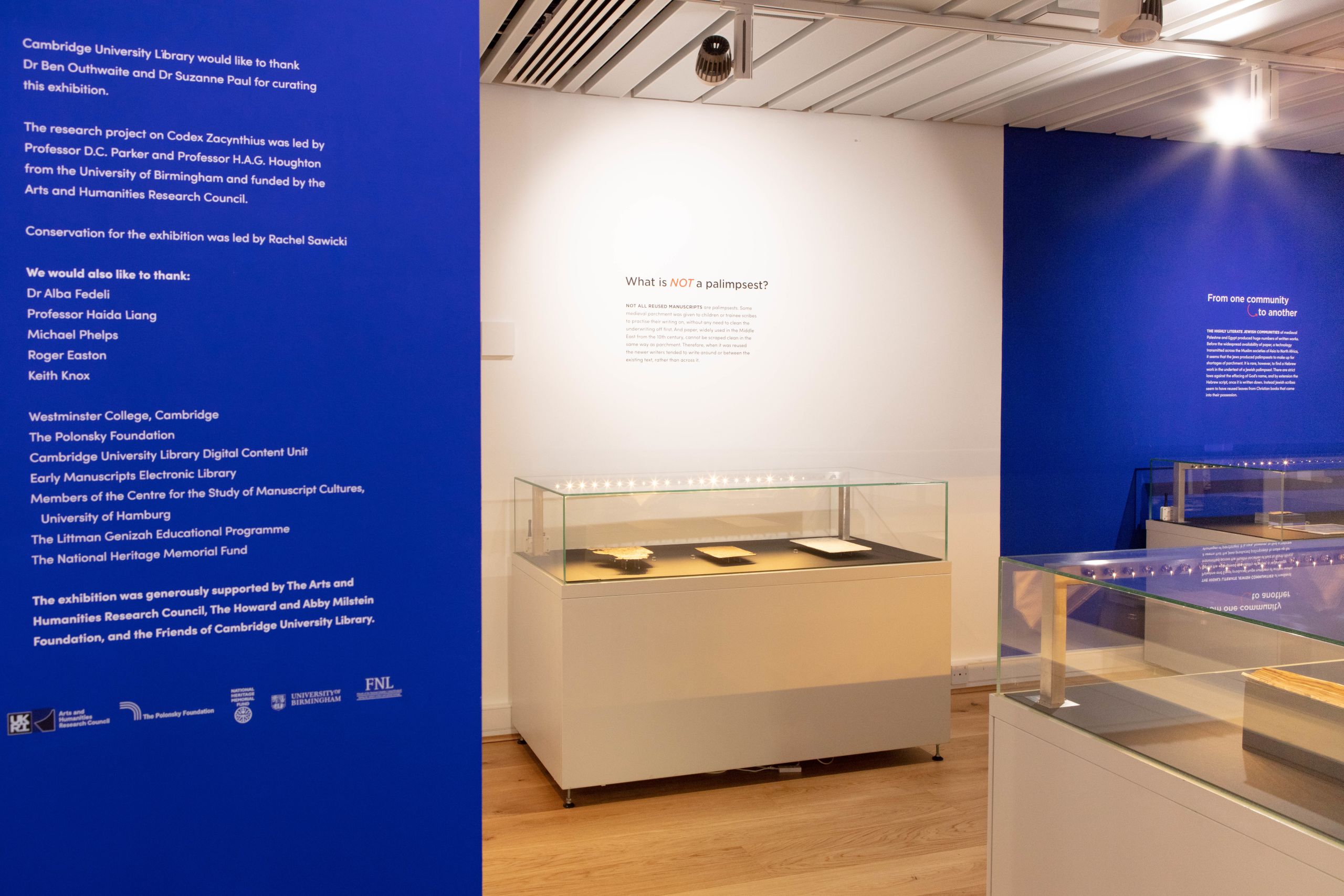
The exhibition in the Milstein Exhibition Centre. Credit: Cambridge University Library
The exhibition in the Milstein Exhibition Centre. Credit: Cambridge University Library
“Just as digital innovation has allowed us to read these manuscripts, we’re using a variety of digital channels to bring them to you. From the comfort of your kitchen table you can walk through the gallery, or examine the things on our digital library. I urge you to take some time to examine these treasures. Palimpsests take a while to reveal their secrets, but for those who persevere the rewards are rich.”
The exhibition is generously supported by the Arts and Humanities Research Council, The Howard and Abby Milstein Foundation, and the Friends of Cambridge University Library.

